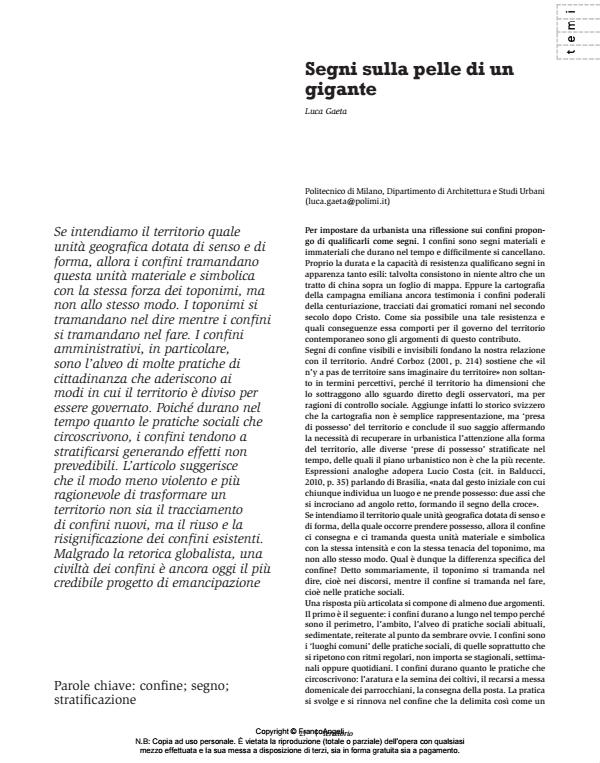Segni sulla pelle di un gigante
Titolo Rivista TERRITORIO
Autori/Curatori Luca Gaeta
Anno di pubblicazione 2014 Fascicolo 2013/67
Lingua Italiano Numero pagine 5 P. 27-31 Dimensione file 3323 KB
DOI 10.3280/TR2013-067004
Il DOI è il codice a barre della proprietà intellettuale: per saperne di più
clicca qui
Qui sotto puoi vedere in anteprima la prima pagina di questo articolo.
Se questo articolo ti interessa, lo puoi acquistare (e scaricare in formato pdf) seguendo le facili indicazioni per acquistare il download credit. Acquista Download Credits per scaricare questo Articolo in formato PDF

FrancoAngeli è membro della Publishers International Linking Association, Inc (PILA)associazione indipendente e non profit per facilitare (attraverso i servizi tecnologici implementati da CrossRef.org) l’accesso degli studiosi ai contenuti digitali nelle pubblicazioni professionali e scientifiche
If a ‘territory’ is defined as a geographical unit equipped with meaning and form, then borders hand down these material and symbolic units from one generation to the next with the same strength as toponyms, but not in the same way. Toponyms hand down memories in our speech, while borders hand them down in what we do. Administrative borders in particular constitute the main guidelines for many procedures concerning citizenship which are regulated by the ways in which a territory is divided in order to be governed. Since they last over time for as long as the social practices they encompass, borders tend to form layers, which generate unpredictable effects. This paper suggests that the least violent most reasonable way of transforming a ‘territory’ is not my drawing new borders, but through reuse and by changing the signification of the existing borders. Despite all the global rhetoric, a civilisation of borders is still today the most credible design for emancipation.
Parole chiave:Border; sign; stratification
Luca Gaeta, Segni sulla pelle di un gigante in "TERRITORIO" 67/2013, pp 27-31, DOI: 10.3280/TR2013-067004